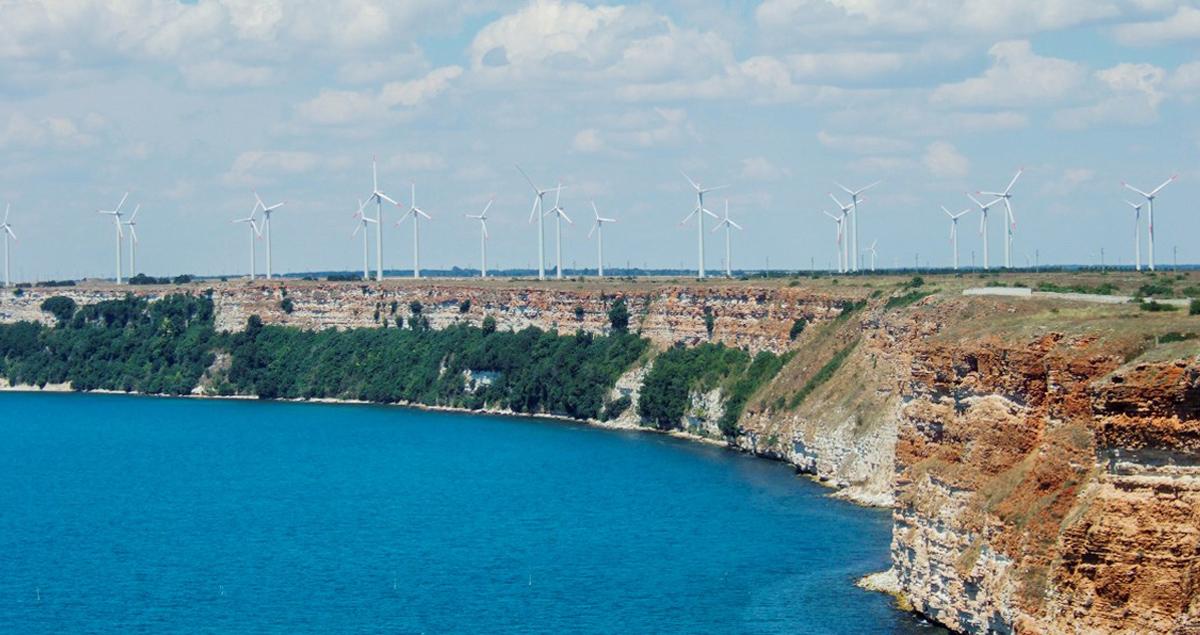Latin America is set to become a leader in alternative energy

The power of the Andean sun
Image above: Kaliakra onshore wind farm in Sophia, Bulgaria - Mitsubishi Heavy Industries and INOS.
Beside the Pan-American Highway, almost 600km (375 miles) north of Santiago, Chile’s capital, lies El Romero, the largest solar-energy plant in Latin America and among the dozen biggest in the world. Its 775,000 grey solar panels spread out across the undulating plateau of the Atacama desert as if they were sheets of water. Built at a cost of $343m by Acciona Energia, a Spanish company, last month El Romero started to be hooked up to the national grid. By April it should reach full strength, generating 196MW of electricity enough to power a city of a million people. A third of its output will be bought directly by Google’s Chilean subsidiary, and the rest fed into the grid.
El Romero is evidence of an energy revolution that is spreading across Latin America. The region already leads the world in clean energy. For almost seven months this year, Costa Rica ran purely on renewable power. Uruguay has come close to that, too. In 2014, the latest year for which comparable data exist, Latin America as a whole produced 53% of its electricity from renewable sources, compared with a world average of 22%, according to the International Energy Agency.
The region’s impressive clean-energy production is boosted by an abundance of hydropower. Big dams are increasingly controversial: in recent years, Brazil and Chile have blocked hydro-electric projects in environmentally sensitive areas. Alternative energy sources, such as wind, solar and geothermal, still only account for around 2% of Latin America’s output, compared with a world average of 6%. Nonetheless, there are several reasons to think this share will grow quickly.
One is the region’s natural endowment. El Romero, for example, enjoys 320 days of sunshine a year. On the horizon, amid the Andean mountaintops, sit two astronomical observatories, testament to the clarity of the air. Much of Latin America is well suited to solar and wind power; volcanic Central America and the Caribbean have geothermal potential.
Worldwide, technological progress and economies of scale have slashed the cost of green energy. Once built, solar plants are much cheaper than thermal power stations to operate. “El Romero is a symbol that alternative energy is no longer alternative. It’s the most commercial now,” says Jose Ignacio Escobar, Acciona Energia’s boss in Chile.
Countries such as Chile, Brazil, Mexico and recently Argentina have tweaked their regulations to encourage alternative energy without having to offer subsidies. Some have held auctions for generation contracts purely for renewables, points out Lisa Viscidi, an energy specialist at the Inter-American Dialogue, a think-tank in Washington. Chile’s regulatory framework is trusted by investors; it has encouraged renewable generation by auctioning smaller contracts. It has set a target of producing 20% of its electricity from non-hydro renewable sources by 2025. Argentina and Mexico have similar goals.
There are two pitfalls. In Chile, the penalty for failing to fulfil contracts is low, which means the winners of auctions may pull out later if they do not raise financing. Moreover, both solar and wind power are intermittent. That means they need to be paired with baseload generation. In many Latin American countries this tends to come from natural gas, which emits less carbon than oil, though in Chile it is coal. Greater efforts to connect grids between countries might reduce the need for fossil fuels as a backup.
Renewable energy offers big benefits to the region. Chile is short of domestic fossil fuels. As a result of its latest auction of energy contracts, by 2025 prices should be a third lower than they are now, reckons Andres Velasco, a former finance minister. By promoting renewables, Latin America is helping to curb carbon emissions globally though it also needs to do more to stop deforestation and encourage public transport.
That matters for political as well as altruistic reasons. Latin Americans worry more than anybody else about climate change, according to polling by the Pew Research Centre, a think-tank. They have good reason. The region is prone to natural disasters and extreme weather. To take one current example, Bolivia last month imposed water rationing in La Paz, the capital. The three reservoirs that serve the city are almost dry. Lake Poopo, once a large freshwater body in the altiplano, has all but dried up, seemingly permanently.
Outside Chile and Colombia, coal deposits are scarce in Latin America. That is one reason why industrialisation came late to the region. In the 21st century, it may turn out to be an advantage in helping Latin America move swiftly to a post-carbon economy.





